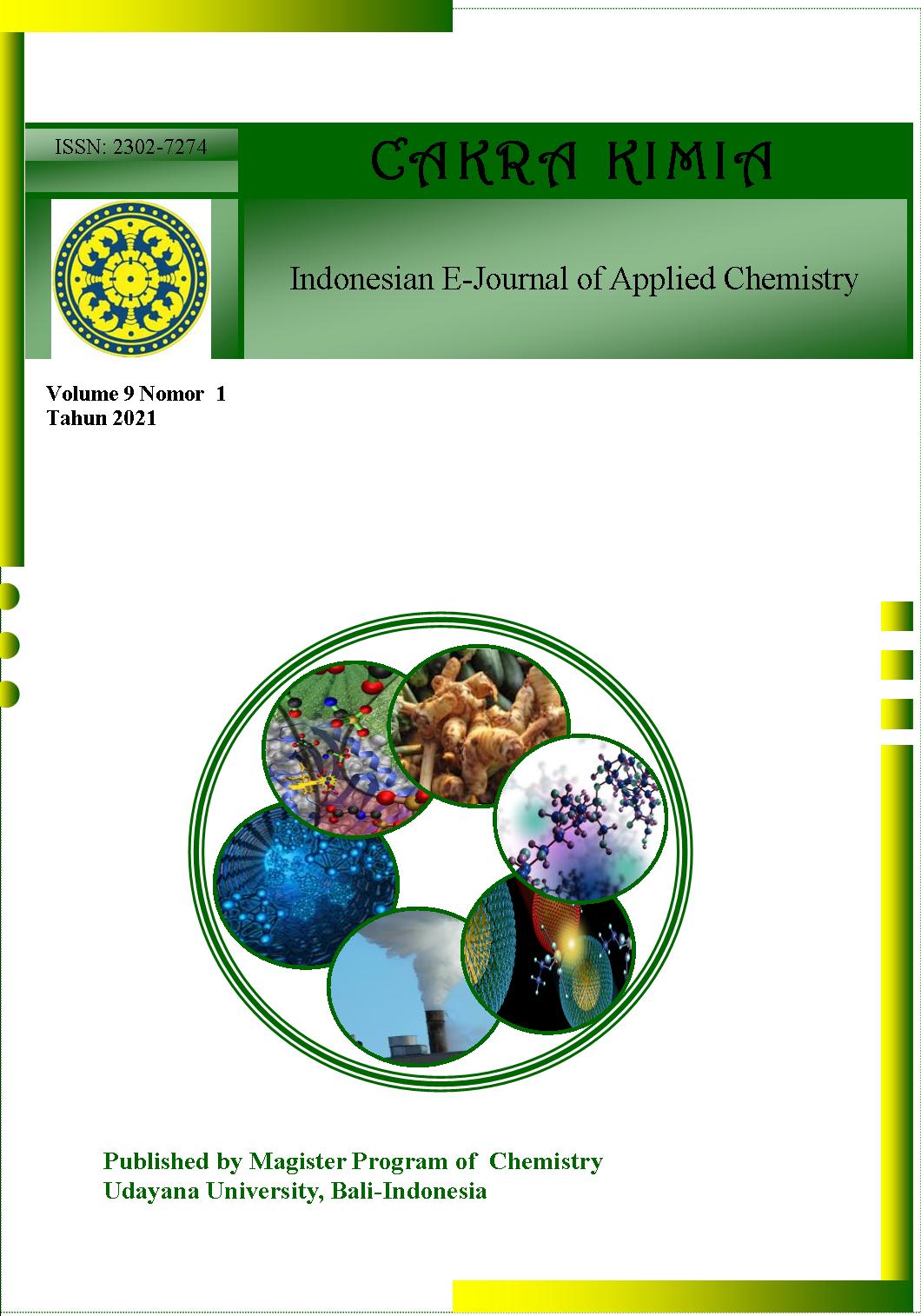SERBUK BIJI BUAH SEMANGKA DAN PEPAYA SEBAGAI KOAGULAN ALAMI DALAM PENJERNIHAN AIR
Abstract
ABSTRAK: Proses koagulasi dalam pengolahan air limbah merupakan proses yang penting. Tujuan koagulasi yaitu untuk menghilangkan kotoran koloid sehingga turbiditas air limbah dapat berkurang. Selama ini koagulan yang dipergunakan dalam proses penjernihan adalah koagulan kimia, yang memiliki kekurangan karena dapat mengganggu kesehatan manusia. Dalam penelitian ini menggunakan bahan alami yang berasal dari tumbuh-tumbuhan sebagai koagulan yaitu biji semangka dan biji pepaya. Serbuk biji semangka dapat menurunkan turbiditas hingga 53,85 % sedangkan biji pepaya 72,31 %. Kemampuan biji pepaya untuk penurunan turbiditas lebih besar dari pada biji semangka karena kadar protein dalam biji pepaya juga lebih besar dari pada kadar protein dalam biji semangka.
ABSTRACT: The coagulation process in wastewater treatment is an important process. The purpose of coagulation is to remove colloidal impurities so that the turbidity of wastewater can be reduced. So far, the coagulants used in the purification process are chemical coagulants, which have disadvantages because they can interfere with human health. In this study, using natural ingredients derived from plants as coagulants, namely watermelon and papaya seeds. Watermelon seed powder can reduce turbidity by up to 53.85% while papaya seeds can reduce the turbidity by 72.31%. The ability of papaya seeds to reduce turbidity is greater than that of watermelon seeds because the protein content in papaya seeds is also greater than the protein content in watermelon seeds.
Downloads
References
[2] V. Yargeau. Water and wastewater treatment: chemical processes. Woodhead Publishing, 2012.
[3] Saravanan J, Priyadharshini D, Soundammal A, Sudha G, Suriyakala K. Wastewater Treatment using Natural Coagulants. SSRG International Journal of Civil Engineering. 2017, 4(30), 37-39.
[4] Mirjana G. Antov, Marina B. Šiban, Slavica R. Adamovi and Mile T. Klašnja. Investigation Of Isolation Conditions And Ion-Exchange Purification Of Protein Coagulation Components From Common Bean Seed. Acta Periodica Technologica. 2007 38(38), 3-8.
[5] Terhi Suopajärvi. Functionalized nanocelluloses in wastewater treatment applications. Finlandia: University of Oulu Juvenes Print, 2015.
[6] Kristianto, H. The Potency of Indonesia Native Plants as Natural Coagulant: a Mini Review. Water Conservation Science and Engineering. 2017, 2(2), 51–60.
[7] Bolto, B., & Gregory, J. Organic polyelectrolytes in water treatment. Water Research. 2007, 41(11), 2301–2324.
[8] Liew A.G., Noor M.J.M and Ng Y.M. Turbid Water Clarification Using Extraction of Cowpea Seed. KKU Engineering Journal, 2004, 31(2), 73 – 82.
[9] Betty Tabiri, Jacob K. Agbenorhevi, Faustina D. Wireko-Manu, Elsa I. Ompouma. Seeds as Food: Nutrient Composition, Phytochemicals and Antioxidant Activity. International Journal of Nutrition and Food Sciences. 2016, 5(2), 139-144.
[10] Syed, H.M., Kunte S.P., Jadhav B.A. and Salve, R.V. Extraction and characterization of papaya seed oil. International Journal of Applied, Physical and Bio-chemistry Research. 2012, 2(1), 33-43.
[11] Samia El-Safy, F., Salem, Rabab H., Abd El-Ghany M.E. Chemical and Nutritional Evaluation of Differen Seed Flours as Novel Sources of Protein. World Journal of Dairy and Food Science. 2012, 7(1), 59-65.
[12] N. A Deak, P. A. Murphy, L. A. Johnson. Effect of NaCl Concentration on Salting-in and Dilution During Salting-out Soy Protein Fractination. Journal of Food Science. 2006, 71(4), C247-C254.



 Petunjuk Penulisan
Petunjuk Penulisan
